
Business
10:52, 11-Sep-2018
China-ASEAN in numbers: Trade ties
Updated
10:25, 14-Sep-2018
CGTN
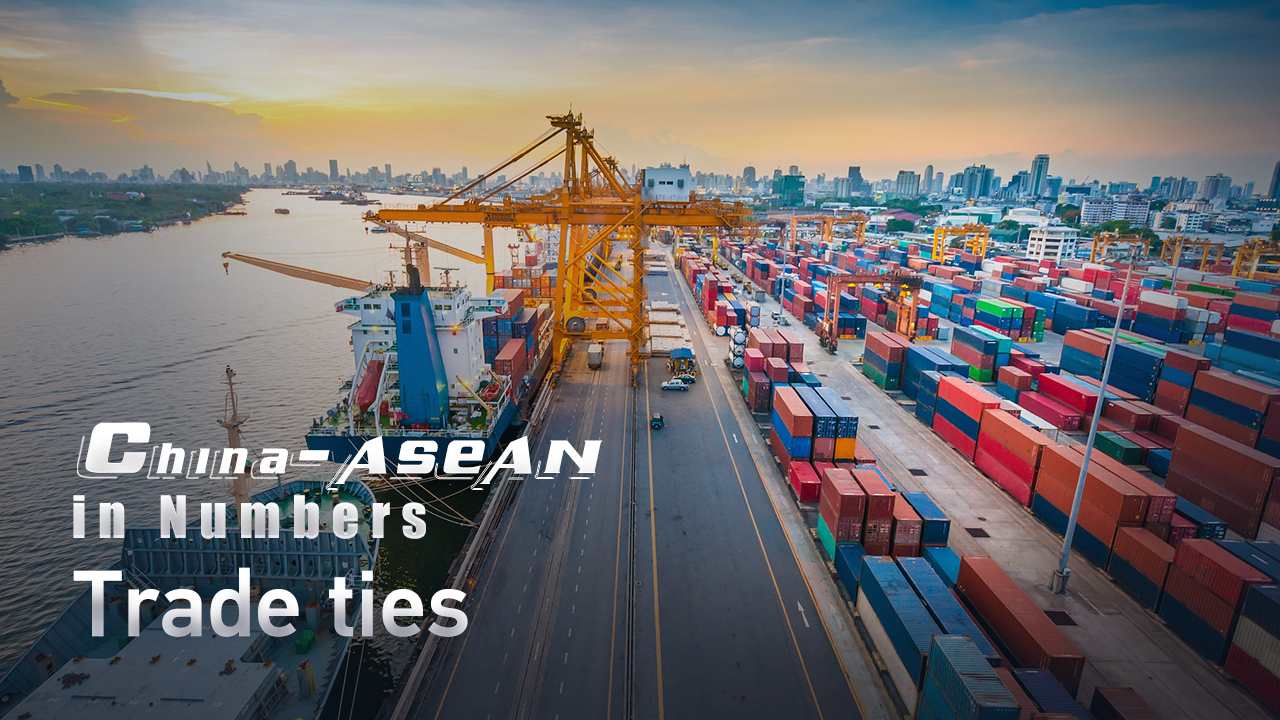
China and the Association of Southeast Asian Nations (ASEAN) have had a long established, friendly relationship since a dialogue mechanism was established in 1991, and the two sides have witnessed increased benefits in a broad array of areas like trade and tourism.
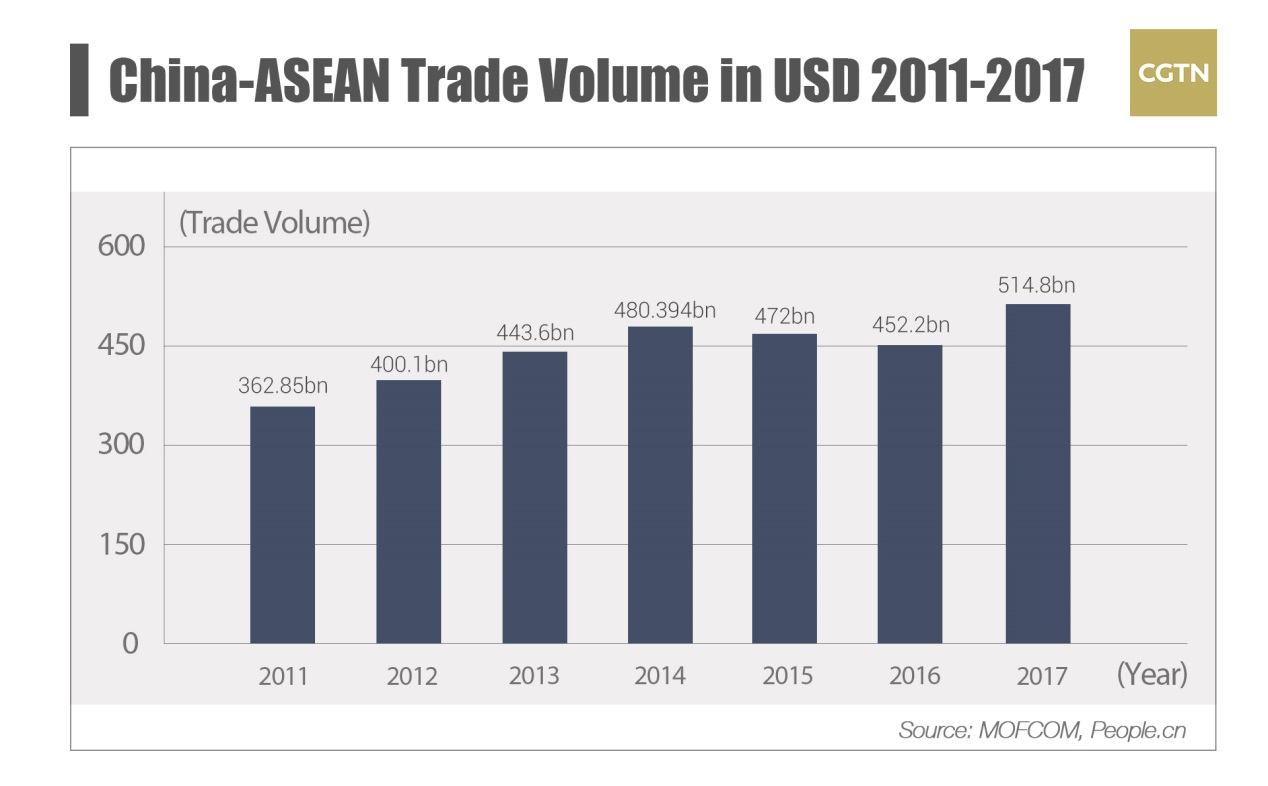
In 2017, China-ASEAN trade volume reached 514.8 billion US dollars with a year-on-year increase of 13.8 percent. China exported 279.1 billion US dollars' worth of goods to ASEAN, up nine percent year on year, and imported goods worth 235.7 billion US dollars, an increase of 20 percent on an annual basis.
China's main export destinations are Vietnam, Singapore and Malaysia, while its main import markets consist of Malaysia, Vietnam and Thailand.
The trade volume between China and ASEAN has risen from 362.85 billion US dollars seven years ago to the current 514.8 billion US dollars, and the total two-way investment stands at nearly 200 billion US dollars.
Since 2009, China has been the largest trading partner of ASEAN. Meanwhile, ASEAN has also become China's third largest trading partner for seven consecutive years.
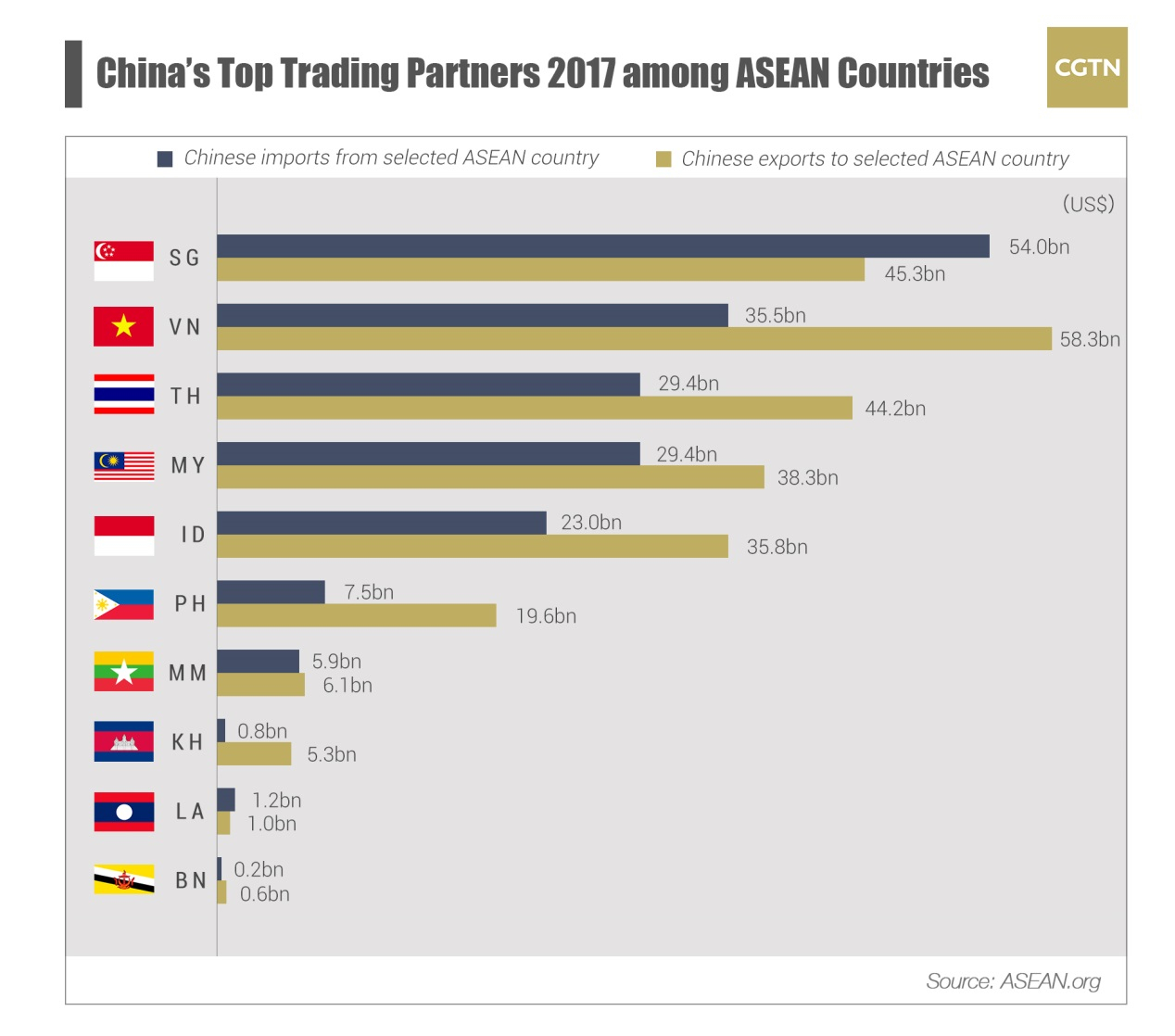
Singapore was top on the list of China's trading partners among ASEAN countries with its total foreign trade value up to 99.3 billion US dollars, followed closely by Vietnam with 93.8 million US dollars and Thailand with 73.6 million US dollars.
China is now Singapore's largest trading partner and source of tourists, and Singapore has become China's largest source of foreign capital and one of the largest offshore RMB clearing centers.
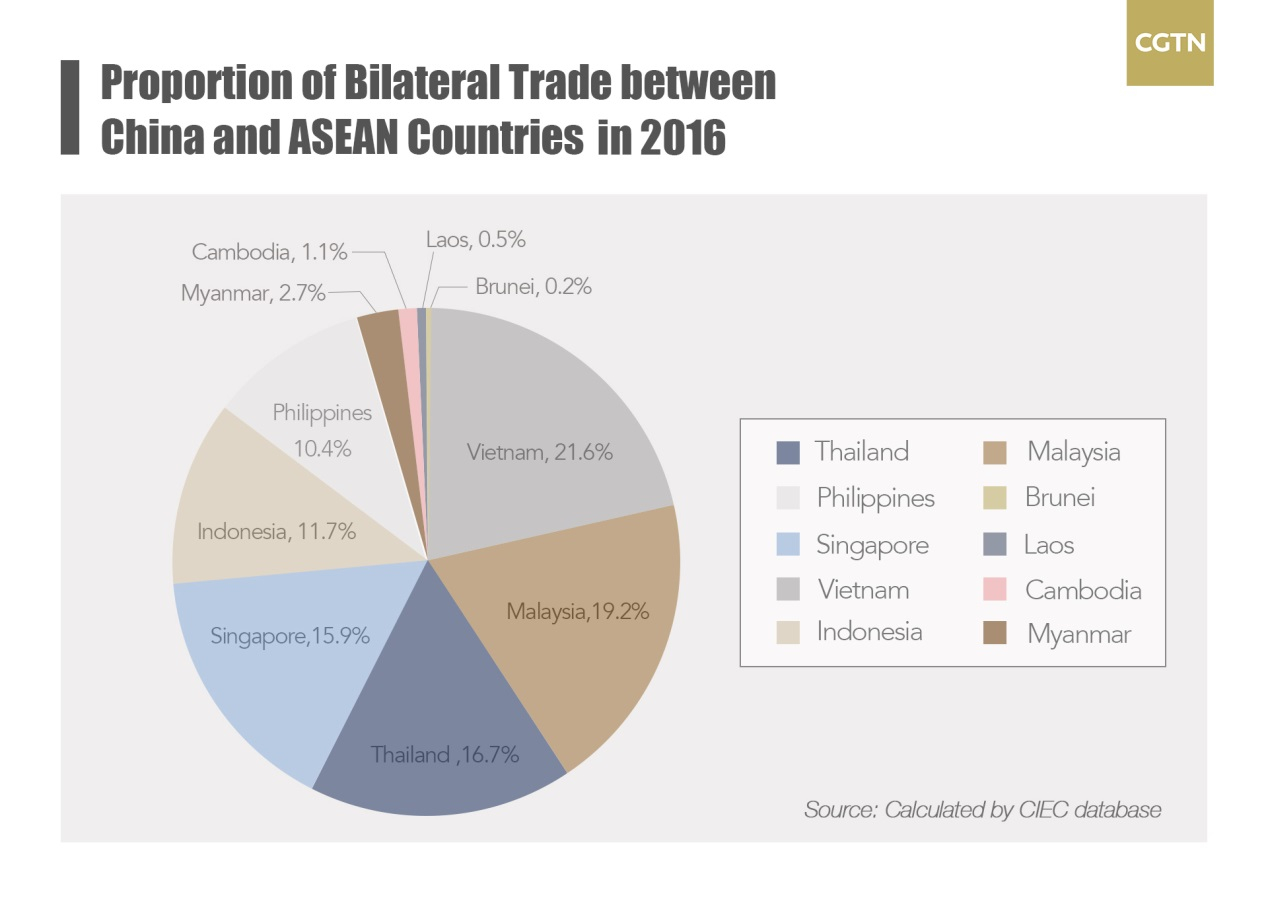
For many years, China has been Vietnam's largest trading partner and its second largest export market. Vietnam took up 21.6 percent of the proportion of bilateral trade between China and ASEAN countries in 2016. In order to achieve bilateral trade volume of 100 billion US dollars (about 680.9 billion yuan), the two sides have formulated moderately flexible policy mechanisms to spur cross-border trade.
The cooperation between China and ASEAN in infrastructure construction and connectivity is also developing fast.
By the end of May 2017, the total amount of infrastructure construction projects signed by Chinese enterprises in ASEAN countries had reached 296.27 billion US dollars. At present, a large number of roads, railways, ports, airports, bridges and electricity projects are being implemented.

In 2017, the commodity with the highest value among China's exports to Southeast Asia was "Electrical machinery and equipment", reaching 50.8 billion US dollars and accounting for 9.9 percent of China's total exports to Southeast Asia, followed by "Boilers, machinery, and mechanical appliances" with their export value standing at 14.7 billion US dollars.
ASEAN is vigorously pushing ahead with infrastructure construction, and the demand for construction, transportation and power equipment is growing.
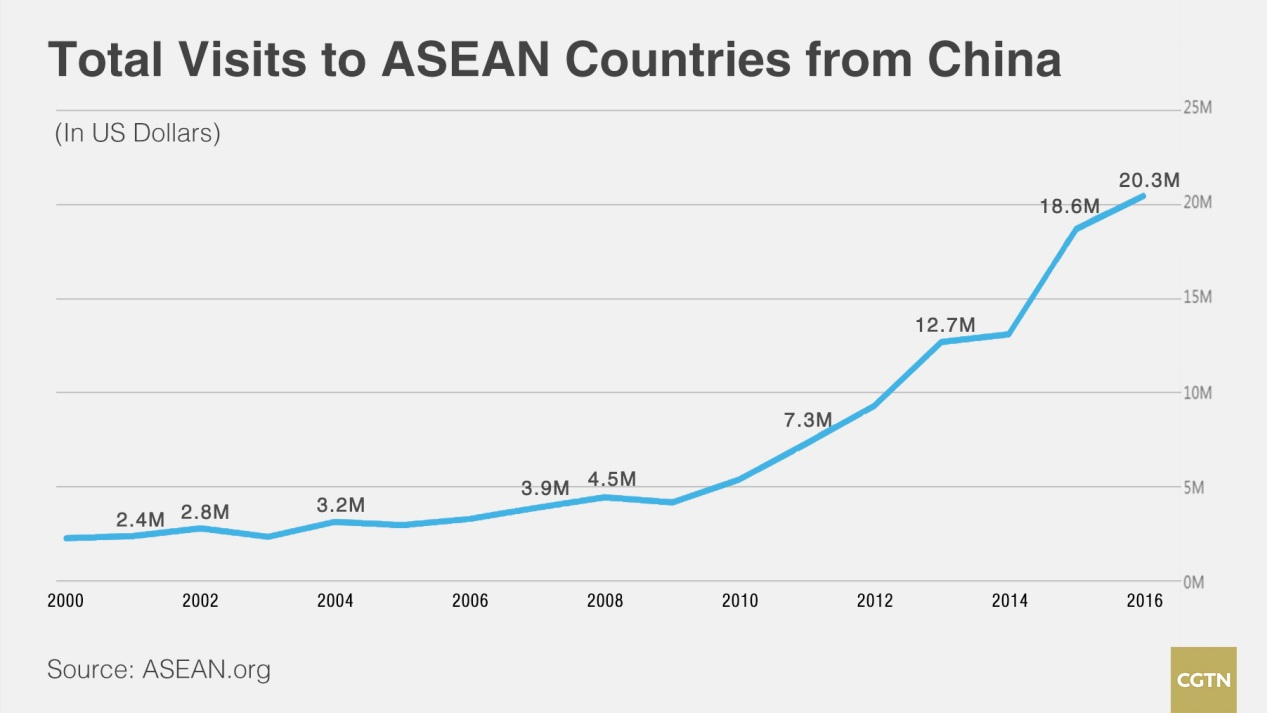
Aside from a booming trade, China has also maintained its position as ASEAN's largest source of foreign tourists since 2012, with 20.3 million Chinese tourists visiting ASEAN countries in 2016, up 6.4 percent from the previous year.
At present, China and ASEAN act as each other's largest overseas tourist destinations and source of tourists, with more than 2,700 flights a week between China and ASEAN countries.
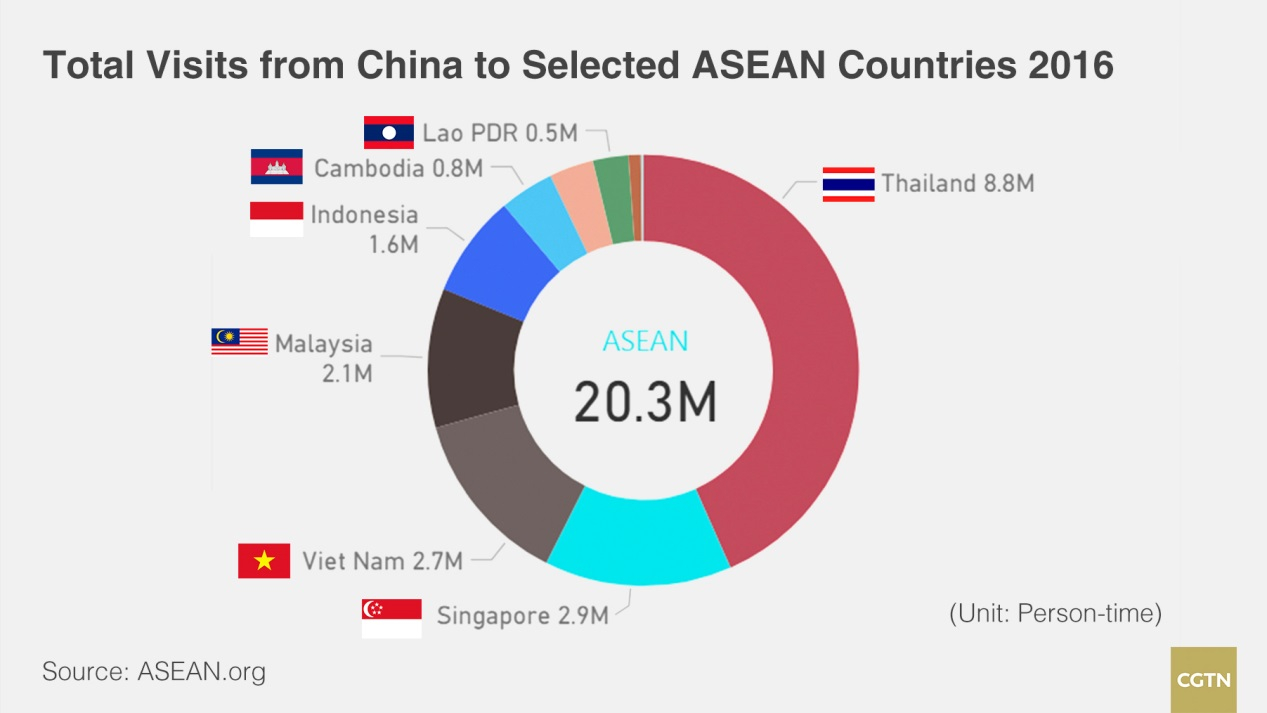
Among them, Thailand attracts the most Chinese tourists with 8.8 million trips in 2016, followed by Singapore, Vietnam and Malaysia, with 2.9 million, 2.7 million, 2.1 million respectively.
Thailand, Singapore and Malaysia are among the earliest destinations for outbound travel.
At the same time, China's appeal to ASEAN tourists is on the rise. Among China's top 15 inbound tourist markets, six are ASEAN countries.
South China's Guangxi Zhuang Autonomous Region welcomes over three million inbound tourists annually on average, and nearly half are from ASEAN countries thanks to its geographical proximity to the 10-nation bloc.

SITEMAP
Copyright © 2018 CGTN. Beijing ICP prepared NO.16065310-3
Copyright © 2018 CGTN. Beijing ICP prepared NO.16065310-3